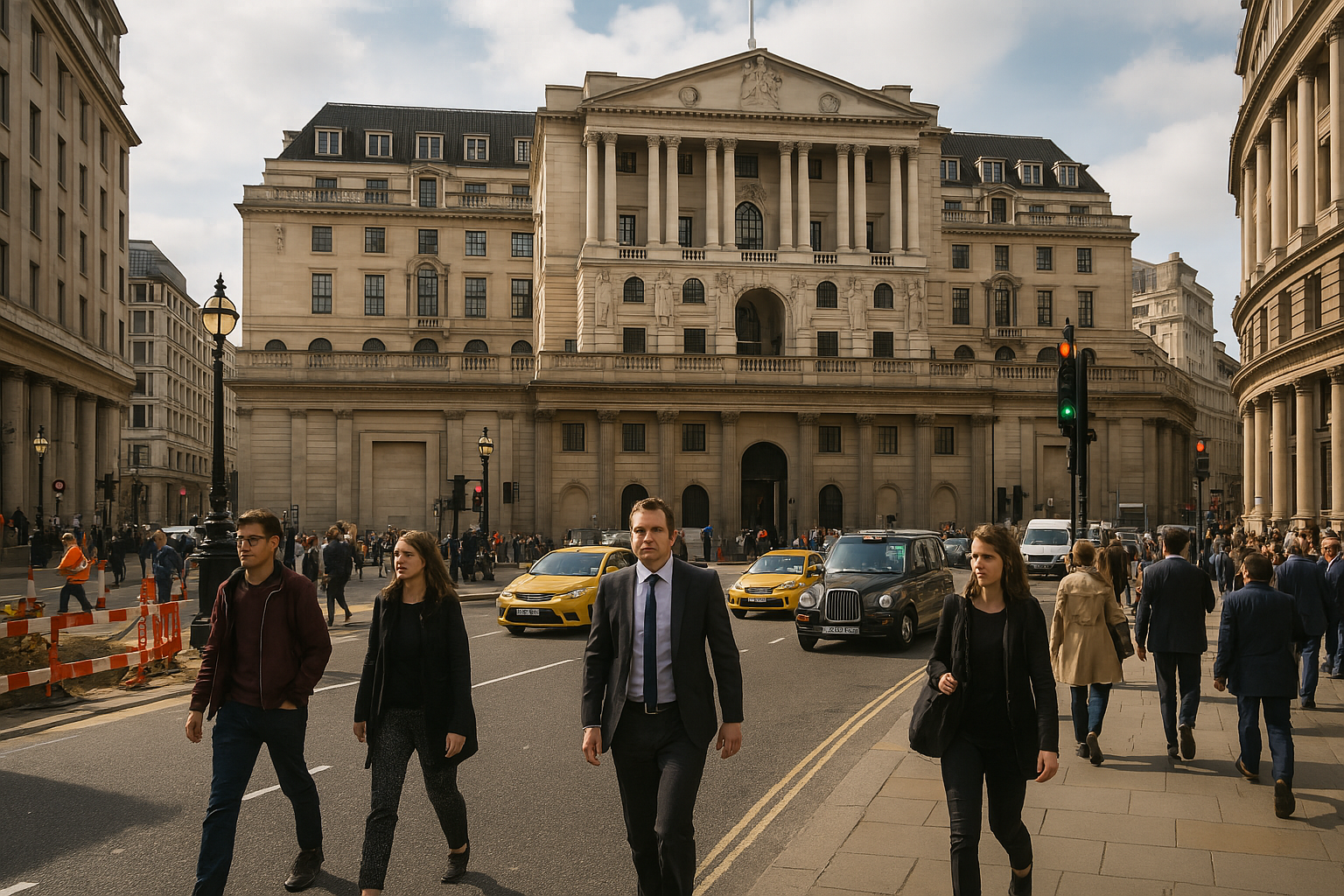This post is part of my personal journey to understand how money really works—not just the basics, but the full picture. I started with a simple curiosity: if I make £100 profit, pay taxes, and spend the rest, and that money becomes someone else’s profit (who then also pays tax and spends it)… does all money eventually end up with tax-man?
The answer is: yes, in theory. As money flows from one person or business to another, it’s taxed at every stage—corporation tax, income tax, VAT, and more. Over time, much of the original amount gradually gets absorbed by the government. This assumes the money keeps circulating without being saved or lost, and that it flows through taxable events.
This led me to a deeper question: Where does money come from to begin with?
The common answer is, “It’s printed by the government,” but that’s only a tiny part of the truth.
Most Money Is Created by Banks
When a bank gives someone a mortgage or loan, it doesn’t move money from a vault or another account. It simply creates a deposit in your account from nothing. On the bank’s balance sheet, it records the loan as an asset (you owe them money) and your deposit as a liability (they owe you the money they just created).
Once you spend that money, it enters the economy and begins to circulate—generating income, profits, taxes, and further economic activity. Over time, you repay the loan. Each repayment has two parts:
- The principal, which is the original money you borrowed. This is destroyed—removed from the money supply as you repay it.
- The interest, which stays in the system as income for the bank.
So, the bank creates “fake” money, and we make it real through our work, effort, and wages—paid back over years or decades. Only the principal is removed from the system. The interest continues circulating.
It’s strange when you think about it: banks create “fake” money effortlessly, and we spend 25 years turning it into something real.
The Economy Needs Continuous Borrowing
Because bank-created money disappears when loans are repaid, the economy needs ongoing borrowing to keep the money supply steady or growing. Without new loans, money would slowly drain out of the system and the economy would shrink.
So yes, there’s a strong connection between loans and economic activity. But if too much lending happens for unproductive reasons (like speculation or bubbles), it can destabilize everything.
Government Spending: Another Form of Money Creation
I also realized there’s a second major way money enters the economy—government spending, especially through benefits like Universal Credit.
Here’s how it differs:
- When the government spends more than it collects in taxes, it runs a deficit.
- To cover that, it either borrows from the market (by issuing bonds) or, in extreme cases, from the central bank.
- That money—used for public sector wages, benefits, infrastructure, etc.—enters the economy directly.
For example, Universal Credit is money given to people with no expectation of repayment or labour in exchange. It’s free-flowing purchasing power, injected into the system.
This is fundamentally different from bank loans, which must be repaid and require labour to justify the creation. Government spending can inject money without needing to be “converted” by the recipient.
So yes, it’s a kind of pure money injection, which is why it’s so powerful—and also why it must be used carefully (to avoid inflation or loss of market trust).
What About Gold?
Out of curiosity, I asked myself: what happens if I take my money and buy physical gold instead of keeping it in the bank?
Technically, this doesn’t destroy money—but it does remove it from circulation. It becomes inactive. It’s not being lent, spent, or taxed. If enough people did this, it would slow down economic activity. Still, the UK government removes VAT from investment gold to stay competitive internationally and to treat gold like other financial instruments. In small amounts, it’s harmless. But in large amounts, it could stall the flow of money.
Conclusion?
Here’s the full cycle, as I now understand it:
- Banks create “fake” money when loans are issued.
- That money enters the economy, circulates, generates value, and gets taxed
- When loans are repaid, the principal is destroyed, and only the interest remains.
- The government injects money too—through spending and benefits—without repayment, sometimes without labour.
- Money can be slowed or frozen (e.g., gold), but the system depends on velocity and flow.
- And throughout this cycle, we turn imaginary numbers into real, hard-earned value.
This whole structure runs quietly behind the scenes of everyday life—and now I see it a little more clearly.


Leave a Reply